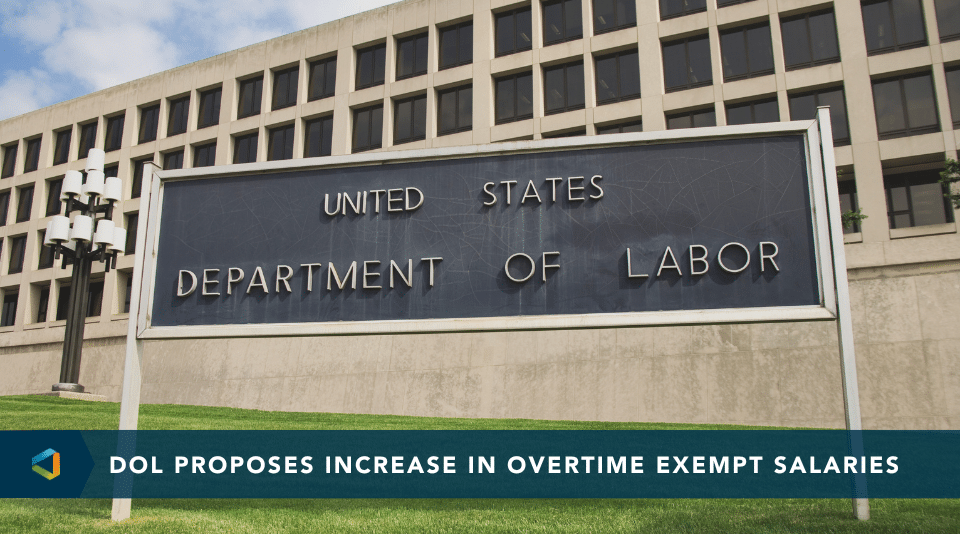In 2016 the U.S. Department of Labor (DOL) issued an Overtime Rule that became controversial and was eventually blocked by a federal judge in November 2016. On July 26, 2017, the DOL published a request for information (RFI) regarding the overtime exemptions to gather information from the public before formulating a proposal to amend the Fair Labor Standards Act (FLSA) or its regulations.
Employers and individuals are encouraged to submit their comments electronically, using the instructions in the Federal eRulemaking Portal. Once comments are submitted, employers and individuals should remember that each comment is then considered public record and will be published without edits, which includes any personal information provided.
Your Voice Matters
As a matter of policy, the DOL must review and respond to each and every comment made, so your voice really matters. It’s difficult for the DOL to understand and anticipate how their proposed rule will affect each and every business. Only you can paint that picture for them.
Please review the below list of questions from the DOL. You certainly may respond to all of the questions but it isn’t necessary. We encourage you to select the ones that have the most impact to you, your business, or your employees.
How to Make a Comment
Click here to access the DOL portal.
Once on the page, select the “Comment Now!” button on the top right of the screen. It will bring you a free-form screen to type your comments.
Tip: In your response, you should preface each of your comments by re-stating the comment question, listed below in the chart on the next few pages, followed by your response.
Click here to view the DOL’s guidance on submitting effective comments.
FLSA Background Information
The FLSA establishes minimum wage and overtime pay protections for many workers in the United States. However, the FLSA exempts certain workers, such as white-collar employees, from these protections. The white-collar exemptions apply to certain executive, administrative, professional, outside sales, computer and highly compensated employees. To qualify for the executive, administrative or professional exemption, an employee must meet a salary basis test, a salary level test and a duties test.
In May 2016, the DOL issued a final rule increasing the required salary level from $455 per week ($23,660 per year) to $913 per week ($47,476 per year) for executive, administrative or professional employees. The rule also increased the salary level for highly compensated employees to $134,004 per year.
Various lawsuits were filed against the final rule and, as a result, on Nov. 22, 2016, a federal judge in Texas issued a preliminary injunction, halting the enforcement of rule until further notice. While the federal government is planning to appeal part of the injunction, the DOL has also signal its intention to revisit the final rule and perhaps amend it.
Request for Public Comment
The RFI allows the DOL to gather information from individuals, employers and industry groups regarding the final rule. Specifically, the RFI is inviting the public to weigh in on the 11 issues described below:
| Name of Issue |
Description |
| Salary level inflation adjustment |
- The current $455 salary level was set in 2004. This level excluded from the exemption roughly the bottom 20 percent of salaried employees in the South and in the retail industry.
- Would updating the 2004 salary level for inflation be an appropriate basis for setting the standard salary level? If so, what measure of inflation should be used?
- Alternatively, would applying the 2004 methodology to current salary data (South and retail industry) be an appropriate basis for setting the salary level?
- Would setting the salary level using either of these methods require changes to the standard duties test and, if so, what change(s) should be made?
|
| Multiple salary level standards |
- Should the regulations contain multiple standard salary levels? If so, how should these levels be set: by size of employer, census region, census division, state, metropolitan statistical area or some other method?
- For example, should the regulations set multiple salary levels using a percentage-based adjustment like that used by the federal government in the General Schedule Locality Areas to adjust for the varying cost of living across different parts of the United States?
- What would the impact of multiple standard salary levels be on particular regions or industries, and on employers with locations in more than one state?
|
| Exemption-specific salary levels |
- Should the Department set different standard salary levels for the executive, administrative and professional exemptions as it did prior to 2004?
- If so, should there be a lower salary for executive and administrative employees as was done from 1963 until the 2004 rule-making?
- What would the impact be on employers and employees?
|
| Short and long salary tests |
- In the 2016 final rule, the Department discussed in detail the pre-2004 long and short test salary levels.
- To be an effective measure for determining exemption status, should the standard salary level be set within the historical range of the short test salary level, at the long test salary level, between the short and long test salary levels, or should it be based on some other methodology?
- Would a standard salary level based on each of these methodologies work effectively with the standard duties test or would changes to the duties test be needed?
|
| Relationship between salary level and duties tests |
- Does the standard salary level set in the 2016 final rule work effectively with the standard duties test or, instead, does it in effect eclipse the role of the duties test in determining exemption status?
- At what salary level does the duties test no longer fulfill its historical role in determining exempt status?
|
| Effect of 2016 final rule |
- To what extent did employers, because of the final rule’s December 2016 deadline:
- Increase exempt employee salaries;
- Decrease newly nonexempt employees hours (or change their implicit hourly rates) so that the total amount paid would remain the same;
- Convert worker pay from salaries to hourly wages; or
- Make changes to workplace policies to limit employee flexibility to work after normal work hours or to track work performed during those times?
- Where these or other changes occurred, what has been the impact (both economic and noneconomic) on the workplace for employers and employees?
- Did small businesses or other small entities encounter any unique challenges in preparing for the 2016 final rule's effective date? Did employers make any additional changes, such as reverting salaries of exempt employees to their prior (pre-rule) levels, after the preliminary injunction was issued?
|
| Possible duties-only test |
- Would a test for exemption that relies solely on the duties performed by the employee without regard to the amount of salary paid by the employer be preferable to the current standard test?
- If so, what elements would be necessary in a duties-only test and would examination of the amount of nonexempt work performed be required?
|
| Non-covered occupations |
- Does the salary level set in the 2016 final rule exclude from exemption particular occupations that have traditionally been covered by the exemption and, if so, what are those occupations?
- Do employees in those occupations perform more than 20 percent or 40 percent nonexempt work per week?
|
| Nondiscretionary bonuses |
- The 2016 final rule for the first time permitted nondiscretionary bonuses and incentive payments (including commissions) to satisfy up to 10 percent of the standard salary level.
- Is this an appropriate limit or should the regulations feature a different percentage cap?
- Is the amount of the standard salary level relevant in determining whether and to what extent such bonus payments should be credited?
|
| Multiple annual compensation levels for highly compensated individuals |
- Should there be multiple total annual compensation levels for the highly compensated employee exemption?
- If so, how should they be set: by size of employer, census region, census division, state, metropolitan statistical area, or some other method? For example, should the regulations set multiple total annual compensation levels using a percentage-based adjustment like that used by the federal government in the General Schedule Locality Areas to adjust for the varying cost of living across different parts of the United States?
- What would the impact of multiple total annual compensation levels be on particular regions or industries?
|
| Automatic updates to highly compensated employee salary level |
- Should the standard salary level and the highly compensated employee total annual compensation level be automatically updated on a periodic basis to ensure that they remain effective, in combination with their respective duties tests, at identifying exempt employees?
- If so, what mechanism should be used for the automatic update, should automatic updates be delayed during periods of negative economic growth and what should the time period be between updates to reflect long term economic conditions?
|
| Source: U.S. Department of Labor |




